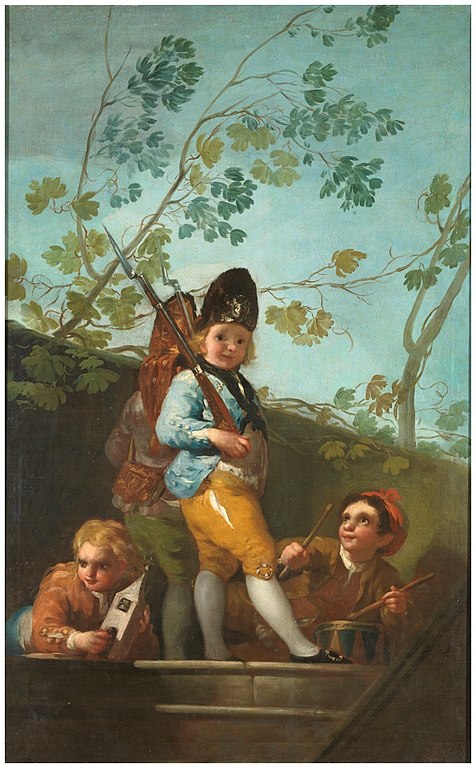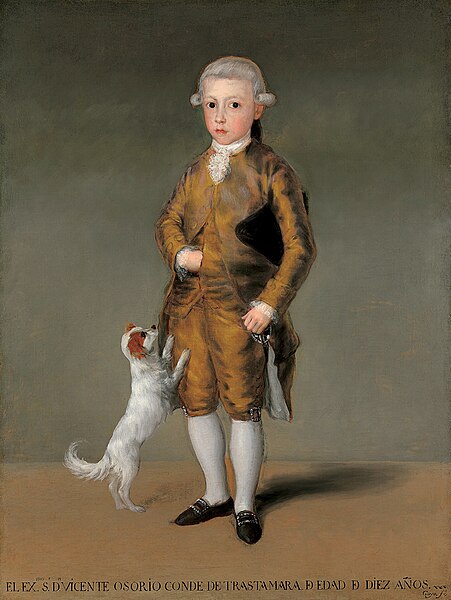
The Thammasat University Library has acquired a new book that should be useful for students interested in art, cultural studies, European history, Spain, and related fields.
Goya: A Portrait of the Artist is by Dr. Janis Tomlinson, director of arts at the National Academy of Sciences, the United States of America.
The TU Library collection also includes other books about the Spanish painter Francisco Goya.
Goya is considered the most important Spanish artist of the late 18th and early 19th centuries. His paintings, drawings, and engravings reflected contemporary historical upheavals and influenced important 19th- and 20th-century painters. Goya is often referred to as the last of the Old Masters and the first of the moderns.

A century ago, the art historian Arthur M. Hind noted:
Goya offers us the strange combination of satirist and court painter. The reign of Charles IV of Spain (1788-1808) was, it is true, a period of moral license, analogous in its reaction against the strictness of the preceding reign to the time of Charles II of England. And in such periods as these the satirist is seldom silenced, while his immunity is insured by the very power that he wields, than which no stronger blackmail can be imagined. But even then the satirist’s safety often lies in his ingenuity in explaining away all personalities, and claiming the position of critic and censor, not of persons but of human nature in general. This was Goya’s attitude, so we owe him no revelations into the rottenness of a licentious court and the corruptions of the political life of the day. In fact, in speaking of his own great satirical series, Los Caprichos, Goya explicitly denied all intention of personalities, affirming that he merely chose subjects by which the prejudices, hypocrisies, and impostures consecrated by time might best be stigmatised and turned to ridicule. This is the inevitable disclaimer of every satirist who draws from his own circle. Nevertheless, whatever his contemporaries knew or thought, and many must have felt the sting of his lash, a generation is enough to have hidden, and we must for the most part be content to lose any special application in the more universal truths, on which Goya has himself left us a commentary. It is like sand in the eyes of those who are seeking for enlightenment. Still we have little basis for confidence in other supposed contemporary manuscripts, in which many famous personages of the court are branded as the victims of Goya’s abuse.
We are laying perhaps undue emphasis on the satirical elements of Goya’s art. But it is this side of his work which strikes one most forcibly in his prints, and it is only with these that we are concerned. He was a great deal more than a satirist. As a painter he started his career with large works, doing extensive frescoes under the influence of Francisco Bayeu, Raphael Mengs, and Giovanni Battista Tiepolo, paintings of biblical subjects, and numerous designs for tapestry. But outside his native country his fame as a painter is chiefly limited to portrait, in which he is Spain’s greatest master since the time of Velazquez, if not one of the greatest masters of modern times.

Another art critic, Hugh Stokes, wrote around the same time:
Technically, Francisco Goya cannot be classed with either Velazquez or Rembrandt. He lacked their superlative skill. But in temperament he is more akin to Rembrandt than to his own countryman. He too was a born experimentalist, with that disdain for materials and methods which may sometimes be found in Rembrandt but never in Velazquez. He worked unceasingly, and his imagination was unusually active. Now Velazquez was stolidly unimaginative, and it is only his superb craftsmanship which saves Los Borrachos and the Forge of Vulcan from failure. In another respect the history of Goya follows that of Velazquez with curious exactness. His own practice anticipated a school of painting which did not come into formal existence until fifty years after he had ceased to work. Madrid has always been remote from the world, and it needs a journey to the Prado to learn that Goya is the godparent of Manet. Born in mediaevalism, educated amidst the classic revival, he was a Romantic before the leaders of that group were bom. For the second time Spain produced an artist destined to inspire the youth of other lands. The influence of Velazquez is possibly on the wane; that of Goya has hardly commenced.
Goya’s influence upon the art of Europe has been very great. Although an academician himself, one of the many contradictions of a contradictory life was his keen hostility towards the academic. ” Always lines and never body,” he cried when criticising his own contemporaries. ” But where do we find these lines in Nature? I can only see masses in light, and masses in shadow, planes which advance, or planes which recede, reliefs or backgrounds. My eye never catches outlines or details. I do not count the hairs on the head of the man who passes me in the street. The buttons on his coat are not the chief objects to catch my glance. My brush ought not to have better eyesight than its master. When these candid teachers meet Nature their ensemble is a mass of detail and these details are almost always fictitious and lying. They confuse their young pupils by making them trace for years, with sharply -pointed pencils, almond-shaped eyes, mouths like arches or hearts, noses resembling the figure seven upside down, oval heads. Ah, if they were but allowed to study Nature. Nature is the only master of drawing.” At another time he said: “My only masters have been Nature, Velazquez, and Rembrandt.” Tradition he refused to bow down to. Although in personality not unlike Turner, his artistic ideals were more those of Constable. The Englishman wrote in 1802: “There is room enough for a natural painter. The great vice of the present day is bravura, an attempt to do something beyond the truth. Fashion always had, and will have, its day; but truth in all things will last, and can only have just claims on posterity.” The words might have come from the mouth of Goya, so exactly do they agree with all his expressed ideas. “A picture that is true is finished,” he used to say.

(All images courtesy of Wikimedia Commons)
